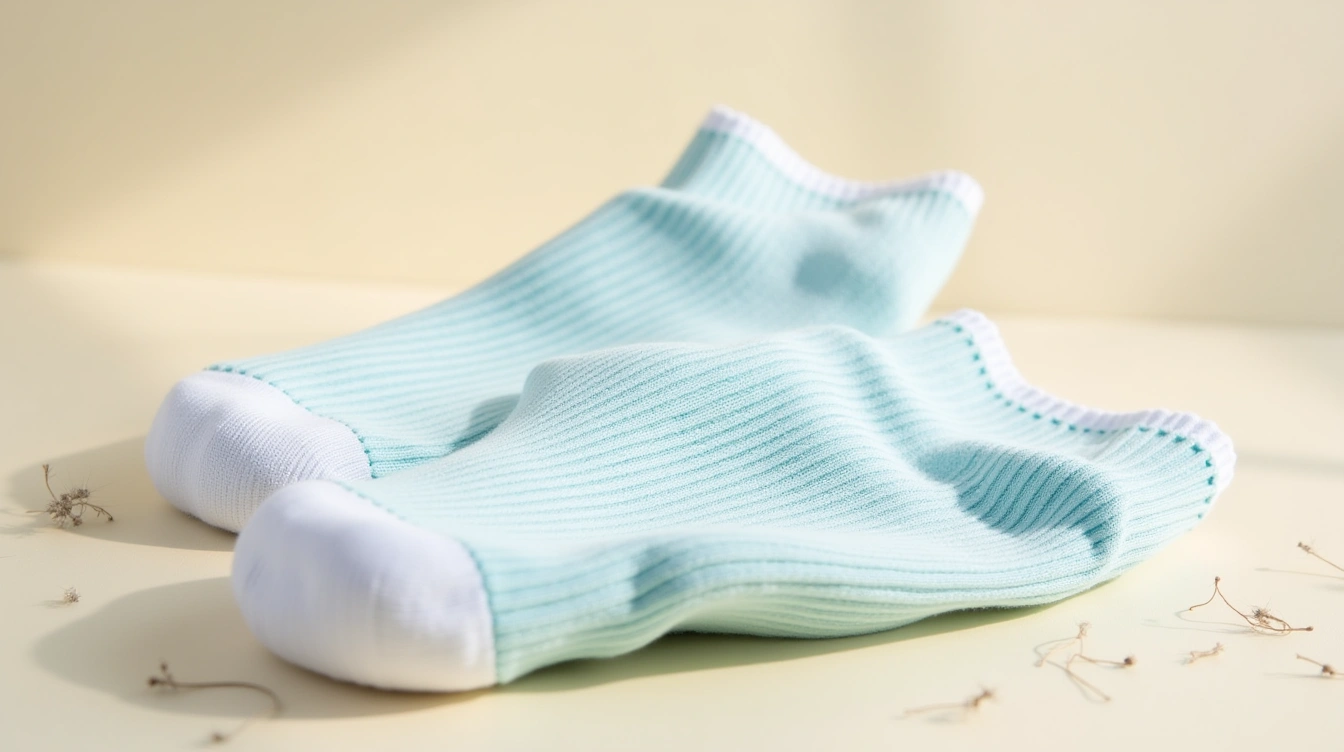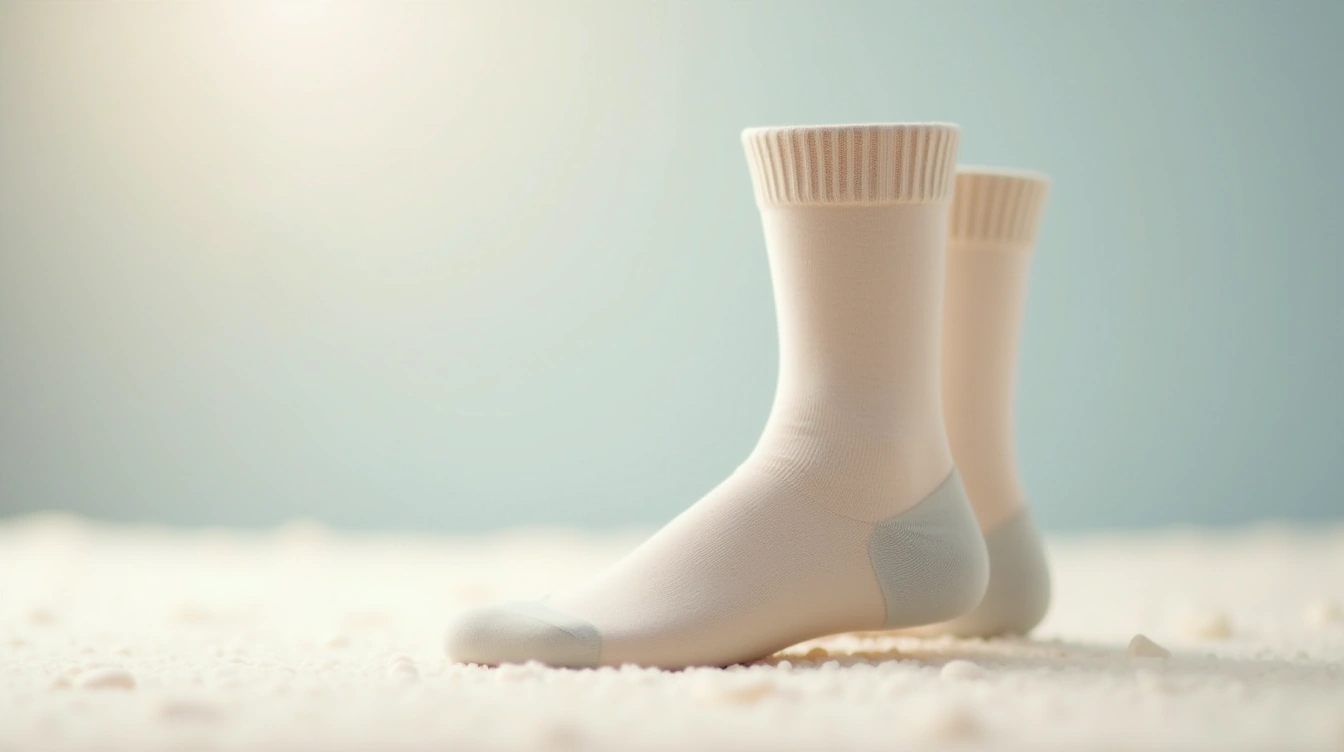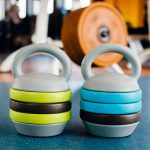Finding the Best Orthopedic Socks for Foot Comfort and Health
Do your feet ache after long days on your feet? You’re not alone—according to the British Podiatry Council, over 8.5 million UK adults experienced chronic foot problems in 2024. Orthopedic socks offer targeted support through specialized cushioning, arch compression, and improved circulation. These therapeutic solutions address common issues like plantar fasciitis, bunions, and general foot fatigue while promoting better posture and reducing daily discomfort.
Understanding the Science Behind Therapeutic Footwear
Therapeutic socks work by applying targeted compression and strategic cushioning to specific anatomical zones of your feet. Unlike regular socks that simply cover your feet, orthopedic designs incorporate graduated pressure systems that promote blood circulation from your toes back to your heart, reducing swelling and fatigue throughout the day.
In the same genre : Do Outdoor Adventures Help Slow Down Myopia Progression in Kids?
The key difference lies in the construction. Standard socks use uniform materials and basic stitching, while therapeutic footwear features zone-specific padding, arch support bands, and seamless toe construction. This targeted approach addresses pressure points that commonly cause discomfort, particularly around bunions, heel areas, and between toes.
Modern therapeutic socks utilise moisture-wicking fabrics combined with antimicrobial treatments to maintain foot health. The compression technology works by gently squeezing blood vessels, encouraging proper circulation while providing stability to your foot’s natural alignment. This scientific approach transforms ordinary hosiery into a medical device that actively supports your podiatric wellbeing.
Also to read : Exploring the Impact of Pet Ownership on the Mental Well-Being of Solo Dwellers
Essential Criteria for Selecting Your Perfect Pair
Choosing the right orthopedic socks requires careful consideration of several key factors. Your specific foot condition, lifestyle, and comfort preferences will guide you toward the most effective solution for your needs.
Here are the essential criteria to evaluate when selecting your therapeutic socks:
- Material quality – Look for moisture-wicking fabrics like bamboo or merino wool that provide breathability while maintaining durability for daily wear
- Compression level – Choose from light (8-15 mmHg) for general comfort, moderate (15-20 mmHg) for circulation issues, or firm (20-30 mmHg) for medical conditions
- Targeted design – Select toe separators for bunions, arch support for plantar fasciitis, or cushioned heels for impact absorption based on your specific concerns
- Sizing accuracy – Measure your feet in the afternoon when they’re naturally swollen to ensure proper fit without being too tight or loose
- Shoe compatibility – Consider thickness and toe box design to ensure your orthopedic socks work comfortably with your existing footwear
Take time to assess your daily activities and foot health goals. This evaluation will help you invest in socks that provide genuine therapeutic benefits rather than temporary comfort.
How Medical-Grade Socks Transform Daily Comfort
The difference between regular socks and medical-grade orthopedic socks becomes evident from the first wear. These specialized garments provide targeted support that addresses common foot problems while delivering immediate comfort improvements throughout your day. Pain reduction represents the most noticeable transformation. The strategic cushioning and arch support work together to alleviate pressure points, reducing discomfort from plantar fasciitis, bunions, and general foot fatigue. Many users report significant relief within days of switching to therapeutic footwear.
Posture improvements follow naturally as proper foot alignment influences your entire skeletal structure. When your feet receive adequate support, your ankles, knees, and hips maintain better positioning, reducing strain on these joints and potentially preventing future complications. Prevention of foot deformations represents a crucial long-term benefit. Quality orthopedic socks with podological certifications can help slow the progression of conditions like hallux valgus while providing the daily comfort needed for active lifestyles. This preventive approach often proves more cost-effective than treating advanced foot problems later.
Addressing Common Foot Problems with Corrective Solutions
Orthopedic socks offer targeted relief for some of the most prevalent foot conditions affecting millions of people daily. These specialized garments work through graduated compression and anatomical design to address specific medical concerns while providing lasting comfort.
For hallux valgus sufferers, the toe separation feature gently realigns the big toe, reducing pressure on the bunion joint. The built-in arch support simultaneously redistributes weight across the foot, preventing further deformity progression. This dual-action approach makes these socks particularly effective for early-stage bunion management.
Plantar fasciitis patients benefit from the targeted heel cushioning and arch compression that reduces inflammation in the plantar fascia. The compression zones work throughout the day to maintain proper foot positioning, offering both immediate pain relief and long-term healing support.
Circulation problems respond well to the graduated compression design, which promotes blood flow from the extremities back to the heart. This feature proves especially valuable for individuals with diabetes, varicose veins, or those who spend long hours standing or sitting. The preventive aspect cannot be overlooked. Regular wear helps maintain proper foot alignment, potentially preventing the development of common deformities and reducing the risk of future complications.
Cost-Effective Investment in Your Foot Health
Face aux coûts élevés des consultations podologiques et des traitements médicaux traditionnels, les chaussettes orthopédiques représentent une alternative économique remarquable. Alors qu’une séance chez un spécialiste peut coûter entre £50 et £100 au Royaume-Uni, une paire de chaussettes thérapeutiques offre des bénéfices durables pour une fraction de ce prix.
Les promotions actuellement disponibles rendent cet investissement encore plus attractif. Avec des réductions pouvant atteindre 50% sur certains modèles, vous accédez à une solution préventive de qualité médicale sans compromis sur votre budget. La livraison gratuite proposée optimise davantage le rapport qualité-prix.
À long terme, cette approche préventive génère des économies substantielles. En réduisant les risques de complications podologiques, vous évitez potentiellement des frais médicaux futurs bien plus conséquents. Une paire de chaussettes orthopédiques de qualité, utilisée quotidiennement, peut durer plusieurs mois tout en maintenant ses propriétés thérapeutiques.
Investir dans votre santé podologique aujourd’hui, c’est préserver votre mobilité et votre confort pour les années à venir.
Your Questions About Therapeutic Socks Answered

Do orthopedic socks really help with foot pain and circulation?
Yes, orthopedic socks provide targeted compression that improves blood flow and reduces swelling. Their specialized design supports foot arch and cushions pressure points, offering genuine relief from plantar fasciitis, diabetes-related discomfort, and circulation issues.
What’s the difference between regular socks and orthopedic toe socks?
Orthopedic toe socks separate each digit, preventing friction and promoting natural toe alignment. They feature graduated compression, moisture-wicking materials, and seamless construction, while regular socks lack these therapeutic benefits and anatomical support features.
How do I choose the right size and material for therapeutic socks?
Measure your ankle and calf circumference for proper compression fit. Choose breathable fabrics like merino wool or bamboo fiber for moisture control. Diabetic users need seamless, non-binding options with extra cushioning.
Can orthopedic socks prevent or correct hallux valgus bunions?
Orthopedic toe socks can slow bunion progression by maintaining proper toe spacing and reducing pressure. However, they cannot reverse existing deformities. Early intervention with therapeutic socks provides the best preventive benefits.
Are medical-grade socks worth the extra cost for daily comfort?
Medical-grade socks offer superior durability and therapeutic benefits that justify higher costs. They last longer than regular socks while providing consistent compression, better materials, and proven health benefits for long-term foot wellness.
Do you offer free delivery on orthopedic sock orders?
Yes, we provide free shipping on qualifying orders throughout the UK. Most orders placed before 2 PM are dispatched the same day, with delivery expected within 2-3 business days to your doorstep.











